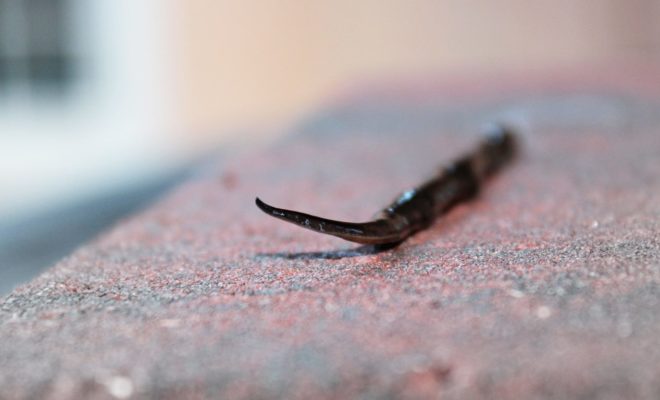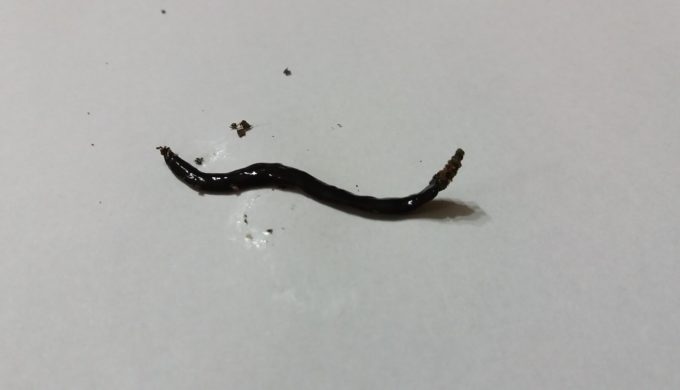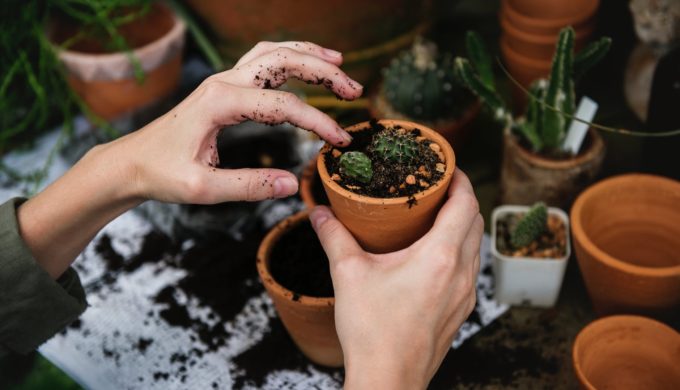It’s been confirmed that the New Guinea Flatworm, known to carry a parasite called the rat lungworm, was found in the backyard of a Pearland, Texas, home in mid-June. The Texas Invasive Species Institute (TISI) confirmed for Marranda Ganucheau that the worm has appeared in Texas, Florida, and Puerto Rico since 2015.
Also known as Platydemus manokwari, the New Guinea Flatworm is black in appearance with a pale stripe along its back. As far as its reputation goes, the International Union for Conservation of Nature (IUCN) has referenced it among the world’s “100 worst invasive alien species” due to its threat to the snail population. The TISI notes that it can grow up to 2.6 inches in length and is “known to be a paratenic host of the rat lungworm. The flatworm itself is not a parasite, but it has the potential to carry them. Please do not pick them up with your bare hands.”
Photo: Facebook/Cristian Andrés Jarpa Martínez
With respect to the rat lungworm parasite which the worm itself can carry, the Centers for Disease Control (CDC) states that it is born in the lungs of rats (hence its name) and winds up in their fecal matter. Snails and certain worms then eat the infected feces and subsequently end up carrying the parasite. If these invertebrates somehow get ingested by humans, then there is a chance they can become infected. However, the parasite cannot be transferred from another human or pet to another human or pet. The CDC also provides clear information with respect to what the symptoms of infection are and further states that it is extremely rare.
Photo: Pexels
It’s believed that since Ganucheau raises butterflies in Pearland, which necessitates the purchase of a variety of plants at various garden centers and stores, the worms most likely made it to her property in the plants. This is the same way conservationists have come to believe it ended up making its way into the U.S. in the first place. “I saw this leech-looking worm and it was just really weird,” Ganucheau told click2houston.com. “It came back the next night, and then there was more of them.” It certainly makes a strong argument for shopping for plants that are native to Texas, which will still work well to attract the type of creatures you want in your garden. Since then, she has been working with the TISI on how to remove them from her property, including the use of a homemade solution.




